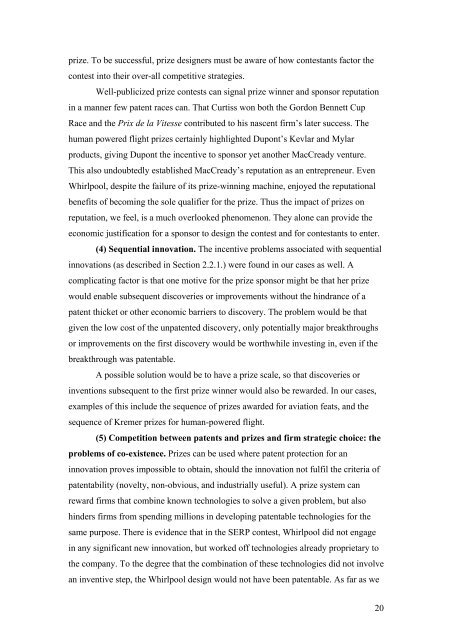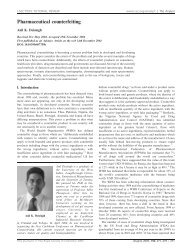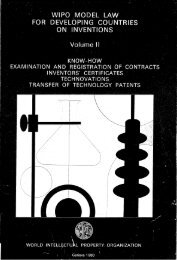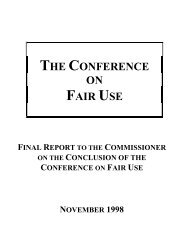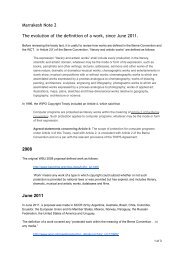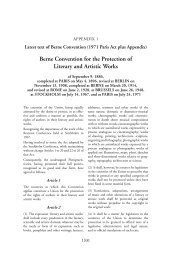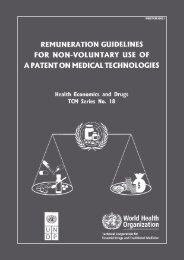how effective are prizes as incentives to innovation? evidence - Druid
how effective are prizes as incentives to innovation? evidence - Druid
how effective are prizes as incentives to innovation? evidence - Druid
- No tags were found...
Create successful ePaper yourself
Turn your PDF publications into a flip-book with our unique Google optimized e-Paper software.
prize. To be successful, prize designers must be aw<strong>are</strong> of <strong>how</strong> contestants fac<strong>to</strong>r thecontest in<strong>to</strong> their over-all competitive strategies.Well-publicized prize contests can signal prize winner and sponsor reputationin a manner few patent races can. That Curtiss won both the Gordon Bennett CupRace and the Prix de la Vitesse contributed <strong>to</strong> his n<strong>as</strong>cent firm’s later success. Thehuman powered flight <strong>prizes</strong> certainly highlighted Dupont’s Kevlar and Mylarproducts, giving Dupont the incentive <strong>to</strong> sponsor yet another MacCready venture.This also undoubtedly established MacCready’s reputation <strong>as</strong> an entrepreneur. EvenWhirlpool, despite the failure of its prize-winning machine, enjoyed the reputationalbenefits of becoming the sole qualifier for the prize. Thus the impact of <strong>prizes</strong> onreputation, we feel, is a much overlooked phenomenon. They alone can provide theeconomic justification for a sponsor <strong>to</strong> design the contest and for contestants <strong>to</strong> enter.(4) Sequential <strong>innovation</strong>. The incentive problems <strong>as</strong>sociated with sequential<strong>innovation</strong>s (<strong>as</strong> described in Section 2.2.1.) were found in our c<strong>as</strong>es <strong>as</strong> well. Acomplicating fac<strong>to</strong>r is that one motive for the prize sponsor might be that her prizewould enable subsequent discoveries or improvements without the hindrance of apatent thicket or other economic barriers <strong>to</strong> discovery. The problem would be thatgiven the low cost of the unpatented discovery, only potentially major breakthroughsor improvements on the first discovery would be worthwhile investing in, even if thebreakthrough w<strong>as</strong> patentable.A possible solution would be <strong>to</strong> have a prize scale, so that discoveries orinventions subsequent <strong>to</strong> the first prize winner would also be rewarded. In our c<strong>as</strong>es,examples of this include the sequence of <strong>prizes</strong> awarded for aviation feats, and thesequence of Kremer <strong>prizes</strong> for human-powered flight.(5) Competition between patents and <strong>prizes</strong> and firm strategic choice: theproblems of co-existence. Prizes can be used where patent protection for an<strong>innovation</strong> proves impossible <strong>to</strong> obtain, should the <strong>innovation</strong> not fulfil the criteria ofpatentability (novelty, non-obvious, and industrially useful). A prize system canreward firms that combine known technologies <strong>to</strong> solve a given problem, but alsohinders firms from spending millions in developing patentable technologies for thesame purpose. There is <strong>evidence</strong> that in the SERP contest, Whirlpool did not engagein any significant new <strong>innovation</strong>, but worked off technologies already proprietary <strong>to</strong>the company. To the degree that the combination of these technologies did not involvean inventive step, the Whirlpool design would not have been patentable. As far <strong>as</strong> we20


